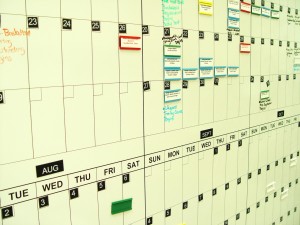Architecture
The glue – process and architecture

We continue to see challenges when technology is utilised in silos to solve point problems across the enterprise. Its an attractive proposition to find technology that appears to solve a problem and focus on implementing it! Experience shows that this rarely delivers the supposed benefits either short or longer term because the implementation decision has been made in isolation of an overall method that can align the enterprise wide stakeholders to common, prioritised goals.
Sadly many teams of hard-working people sacrifice themselves to the implementations of these projects and then become disillusioned and demoralised when the results are not as expected.
What is the answer? Of course books have been written to discuss this question but a holistic methodology could be broken down into a series of steps:
1) Determine the enterprise core mission, such as selling goods to consumers or producing components for car manufacturers
2) Document at a high level the processes that have to be in place to carry out the core mission. At some level this revolves around Plan, Buy, Move, Sell
3) Assess the enterprise competencies for these core processes and determine if and where improvements should be made. This is executive level decision-making which naturally includes a level of prioritisation that becomes a shared vision. The expected benefits of these improvements should be built into the business plan
4) Architect a roadmap for the improvements. This has to consider capacity, capability, more process detail, change management and organisational implications as well as availability of capital investment.
5) Align the current technology and data state with the roadmap and identify particularly the application level changes that may be required. This level is still considering the enterprise as a whole and so cross functional opportunities and implications should be uncovered
6) Looking at the process, application and data roadmap the infrastructure can now be considered. Here we can identify how much change can be supported and what kind of infrastructure solutions are appropriate including cloud solutions
7) Organise the roadmap and its associated information into programmes and projects keeping a strong focus on how these contribute to the benefits expected in step 3
8) Focus on delivery of the planned projects including managing the wide range of stakeholders and regular reporting of progress against the agreed roadmap and priorities
9) Hand off completed projects into business as usual teams ensuring that tools the enterprise uses to record organisation, process, benefits tracking and delivery performance are updated
10) Never expect the enterprise to stand still! Real world internal and external factors can cause in-flight changes to many of the steps above for both positive and negative reasons. Prepare stakeholders for this, expect change and have management tools in place to accept, identify and facilitate corrections. Keeping this expectation and agility is key to remaining competitive as customer expectations increase and strategic cycle times shorten.
More details and opinion on the points above will follow in future blog posts……

 D5 Creation
D5 Creation